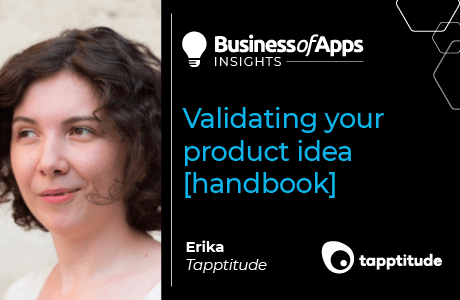
If you’re planning on building a mobile app, you’re probably debating in your head the pros and cons of building first for iOS or Android. But making the best decision depends on several factors we’re going to detail here in this article. Hopefully, by the end of it, you’ll feel more confident in making an informed decision between iOS or Android app development.
Three factors to consider when choosing between Android and iOS development
Choosing either Android or iOS as your launch platform for your mobile app depends a lot on your business goals, your target audience and your market. We’ll go through the main factors that you should be paying attention to.
Global smartphone usage
Recent studies show that mobile phones now account for over half of the time spent online on a global level. According to GSMA’s 2020 Mobile Economy report, mobile penetration reached 67% of the global population at the end of 2019. In Europe, the percentage is even higher, at 86%, and it’s expected to reach 87% by 2025. The numbers are similar in North America, where mobile penetration closed 2019 at 83%.
Revenue
Getting back to what platform to choose, you’re considering Android or iOS because they rule the mobile industry market share. But market share alone doesn’t tell the whole story. How much revenue each platform generates might be a more relevant story, and in this area, things couldn’t be more different.
Although Android currently dominates market share with 74%, Apple’s iOS platform dominates in terms of revenue. In 2019, the iOS App Store generated $46.6 billion in revenue, while Google Play revenue stood at $24.8 billion, according to Business of Apps.
Brand loyalty and spending power
As a brand, Apple has always enjoyed a loyal fan base of users who chose to switch from Android to iOS and have never looked back. Recently, however, that trend has started to reverse, with more and more iOS users making the switch to Android. According to DazeInfo, one out of four iPhone X users moved to Android between October 2019 and June 2020.
On the other hand, iOS users have more spending power compared to Android users. Users spent $15 billion on iOS apps during the first quarter of 2020 – 5% more than they did the year before. Android users spent $8.3 billion on Google Play apps in Q1, again, 5% more than in Q1 2019.
Consequently, if one of your main business goals is brand loyalty, you can’t go wrong with either platform. If, however, you’re planning on developing a premium app, you might want to start with iOS, as Apple users have more spending power when it comes to mobile apps.
Is it better to develop for iOS or Android first? – the 3 criteria to help you choose
Up until now, we’ve talked about the market-shaping factors to help you choose between iOS and Android. Next, let’s look at factors that are closer to your business and mobile app.
Where is your target audience?
As Android is aiming for massive adoption, they have great success in emerging markets like Asia, Africa and South America. iOS instead focuses on premium customers and markets like North America and Europe.
Despite its premium market strategy, iOS has always struggled to keep up with the way Android is spreading. Looking into statistics on operating system usage by countries, we can see that in most of the states, Android is used primarily instead of iOS, even in premium markets. However, the differences are not as dramatic as they were a few years ago, and iOS has been gaining traction.
To help you have a better understanding, the data below is from June 2020, extracted from Statcounter:
How do you plan to make money?
What is your planned monetisation strategy for your mobile app? In-app purchases, a paid app, or advertising? When it comes to in-app purchases, Apple’s got the upper hand. The App Store generated $32.8 billion from in-app purchases in the first half of 2020, 24.7% more than it did the year before, according to SensorTower. By comparison, Google Play recorded $17.3 billion in in-app purchases, up 21% year-over-year. If your business strategy is focused on in-app purchases or subscriptions, then you should know Apple users tend to spend more than Android users in this regard.
Are you building an eCommerce app?
If you’re planning on developing an eCommerce app that allows users to purchase products directly from their mobile devices, then you’ll want to know how likely platform users are to purchase things online. Data shows that during the second quarter of 2019, 28.5% of all digital eCommerce dollars in the United States were spent via mobile devices. If we look at the average spend of a user over a period of over 90 days, an iOS user will spend almost $20 to the $11.50 of an Android user.
Why not build for both platforms from the start?
When you have a great mobile app idea that you believe is going to revolutionize how lots of people do things today, your first thought might be to make it available to as many users as possible. That usually means having it on every mobile device possible: iPad, iPhone, Android phones, smartwatches, and so on. So, you might be asking yourself, “why do I really have to choose between iOS and Android in the first place?”
The most common answer to this question is related to costs. If your business is in its early stages, you don’t really have the required resources – time or money – and therefore you cannot afford to go for both. The best approach in this situation is to look at your target audience and figure out what mobile platforms they use.
The second answer is related to validation. As convinced as you may be of the potential of your idea, the real test is going to happen at the first interaction between product and core audience. Starting with one platform at a time might help you refine your solution until you’re ready to scale while also saving you additional costs.
How to decide on a platform when you’re on a tight budget
We advise clients who are tight on resources or are venturing into uncharted waters to do two things:
- Start with one mobile platform, be it iOS or Android, depending on what your target audience prefers;
- Define the minimum mobile product that would deliver the core value for your users, and plan to launch a Minimum Viable Mobile Product first.
Starting with an MVP allows you to mitigate the biggest entrepreneurial risk (building a product nobody wants) by testing the market really fast and with minimum investment. If it’s done right, launching a mobile MVP can offer valuable insights into what your users need, how they use the product, and your abilities to get traction with the product core value.
In our experience, startups that do this have better chances of not running out of money before Product/Market Fit, and fundamentally increase their chances of building a sustainable business on mobile.
Conclusion: the Android vs iOS balancing act continues
Each of these major mobile platforms has its own advantages and disadvantages. Android allows you to reach a broader audience, while Apple’s audience is more engaged, loyal and open to spending their money on an app they like.
To decide what mobile platform you’re going to build your product for, you first need to walk through the steps to:
- Understand your core audience: who will be your early adopters?
- Understand your business model: how will you be making money?
- Map your components: how is your product made up?
- Map out your business vision: what do you want to achieve mid- to long-term?
If you’re still struggling with defining your product and are unsure which platform suits your product idea best, get in touch with us and let us help you.













